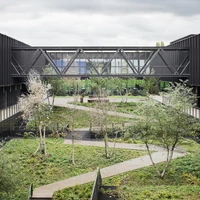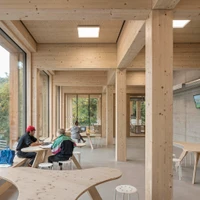Learning by building
With third-level education booming globally, universities are in a fight to attract the brightest and the best – and to ensure their financial sustainability. Enter some of the brightest and best architects to help provide a competitive edge.
April 20, 2021 | 10:00 pm CUT

The atrium of the new Mälardalen University Campus Eskilstuna by AIX Arkitekter and 3XN, designed around a former swimming pool from the 1930s. Photo: Åke E:son Lindman



Acting as a meeting point between student, staff and local residents, Grafton Architects' TownHouse is a new hybrid building for the Kingston University campus. Photos: Ed Reeve



The rational and technical appearance of TANK Architectes and COSA's Léonard de Vinci Technical College is softened by a green inclined courtyard that bisects the building. Photos: Camille Gharbi



As well as using sustainable materials, the large areas of glazing at SWAP Architekten and DELTA's Library and Seminar Centre BOKU in Vienna can be opened in the summer for natural ventilation. Photos: Hertha Hurnaus



By incorporating an old swimming pool into the new Mälardalen University Campus Eskilstuna, AIX Arkitekter and 3XN show that diverse building typologies can be adapted for education. Photos: Åke E:son Lindman
Project Gallery















